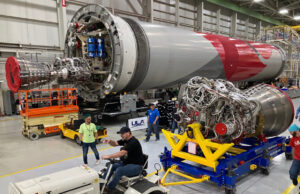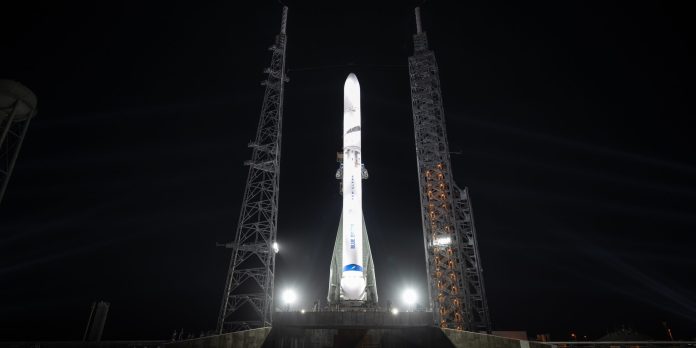 The company said the milestone is the first view of the advanced heavy-lift vehicle, which will support a multitude of customer missions and Blue Origin programs, including returning to the moon as part of NASA’s Artemis program.
The company said the milestone is the first view of the advanced heavy-lift vehicle, which will support a multitude of customer missions and Blue Origin programs, including returning to the moon as part of NASA’s Artemis program.The journey to the pad began in December when New Glenn’s first-stage modules were transported from the factory to the Integration Facility nine miles away. Blue Origin said the tests will conclude in the coming weeks following several demonstrations of cryogenic fluid loading, pressure control, and the vehicle’s venting systems.
“Our launch pad and ground systems are complete and will be activated for the first time during the test campaign,” the company said.
New Glenn is named after John Glenn, the first American to orbit Earth. The rocket stands more than 320 feet (98 meters) high — roughly the height of a 30-story building — and features a seven-meter payload fairing, enabling twice the volume of standard five-meter class commercial launch systems.
The fairing is large enough to hold three school buses. Its reusable first stage aims for a minimum of 25 missions and will land on a sea-based platform located roughly 620 miles (1,000 km) downrange. Reusability is integral to radically reducing cost-per-launch.

The vehicle is powered by seven of Blue Origin’s BE-4 engines, the most powerful liquid oxygen/liquefied natural gas engine developed since Saturn V’s F1 engines. LNG is cleaner-burning and higher-performing than kerosene-based fuels.
Blue Origin has several New Glenn vehicles in production and a full customer manifest. Customers include NASA, Project Kuiper, Telesat, and Eutelsat, among others.
Blue Origin is certifying New Glenn with the U.S. Space Force for the National Security Space Launch program to meet emerging national security objectives.
Don’t miss out! Subscribe to our email newsletter to have all our smart stories delivered to your inbox.



